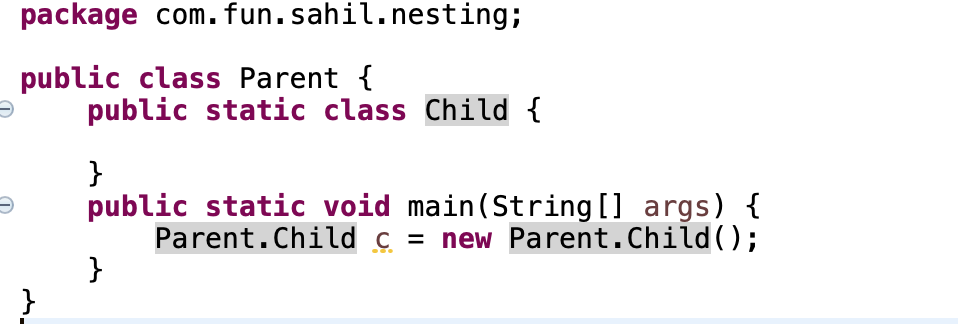static nested class is just like any other outer class, as it doesn't have access to outer class members.
Just for packaging convenience we can club static nested classes into one outer class for readability purpose. Other than this there is no other use case of static nested class.
Example for such kind of usage, you can find in Android R.java (resources) file.
Res folder of android contains layouts (containing screen designs), drawable folder (containing images used for project), values folder (which contains string constants), etc..
Sine all the folders are part of Res folder, android tool generates a R.java (resources) file which internally contains lot of static nested classes for each of their inner folders.
Here is the look and feel of R.java file generated in android:
Here they are using only for packaging convenience.
/* AUTO-GENERATED FILE. DO NOT MODIFY.
*
* This class was automatically generated by the
* aapt tool from the resource data it found. It
* should not be modified by hand.
*/
package com.techpalle.b17_testthird;
public final class R {
public static final class drawable {
public static final int ic_launcher=0x7f020000;
}
public static final class layout {
public static final int activity_main=0x7f030000;
}
public static final class menu {
public static final int main=0x7f070000;
}
public static final class string {
public static final int action_settings=0x7f050001;
public static final int app_name=0x7f050000;
public static final int hello_world=0x7f050002;
}
}


